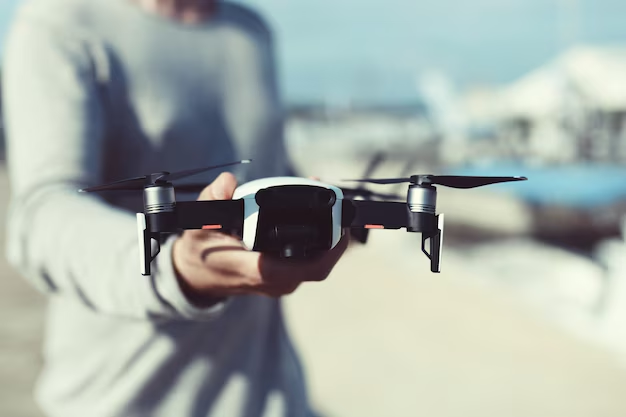🚁 Navigating Drone Insurance: Everything You Need to Know
Drones have soared from niche gadgets to mainstream tools, used in industries ranging from filmmaking to agriculture. Whether you're a hobbyist or a commercial operator, understanding drone insurance is crucial. Just like insuring a car or home, drone insurance protects against potential mishaps. Let's explore why it's important and how to choose the right coverage for your needs.
📋 Why Drone Insurance Matters
Drones come with a set of risks. With the possibility of crashes, malfunctions, or causing harm to others, having robust insurance can safeguard your finances and peace of mind.
Protecting Your Investment
Drones, especially those with advanced capabilities, represent a significant financial investment. Comprehensive insurance ensures that you won't bear the brunt of repair or replacement costs in the event of damage or loss.
Liability Coverage
Accidents happen. If your drone accidentally damages property or injures someone, liability insurance can help cover the costs. This coverage is not just a good idea—it's often required by law or contract, especially for commercial operators.
🛡️ Types of Drone Insurance
Drone insurance typically includes several coverage types, each catering to different needs and situations.
1. Liability Insurance
This is the most basic and essential form of insurance. It covers third-party damages and injuries but does not include repairs to your drone itself. Liability insurance is crucial if you fly over public areas or near people and property.
2. Hull Insurance
Hull insurance covers physical damage to your drone, including repair or replacement costs. This is particularly valuable for high-end drones or custom-built models where repair costs can be substantial.
3. Personal Injury Insurance
Personal injury insurance provides compensation if your drone causes harm to individuals, covering legal defense and any settlements.
4. Invasion of Privacy Insurance
With the increasing prevalence of drones, privacy concerns have surged. This insurance type covers legal fees and settlements if your drone inadvertently violates someone's privacy.
5. Payload Insurance
If you operate drones for tasks involving specialized equipment (like cameras or sensors), payload insurance covers any equipment damage or loss separate from the drone itself.
📊 Choosing the Right Policy
Selecting the right insurance requires assessing your specific needs. Here are some key considerations to guide you:
Frequency and Nature of Use
- Commercial vs. Recreational: More frequent flyers or those flying for commercial purposes may need more extensive coverage.
- Location: Flying in urban areas or crowded spaces might require higher liability limits.
Value of Equipment
The more expensive your drone and its components, the more you will want to cover it against damage or theft.
Regulatory Requirements
Check local laws and regulations that might mandate specific insurance types or limits for drone operations.
Risk Assessment
Consider the potential risks associated with your typical flight operations. Higher-risk activities, such as flying in adverse weather or over water, might necessitate additional coverage.
🚀 Getting Insured: Steps & Tips
Here's a streamlined process to secure reliable drone insurance:
1. Evaluate Your Needs
Consider your drone's usage patterns, the potential risks involved, and the equipment's value. This understanding will guide you in selecting necessary coverages such as liability or hull insurance.
2. Research Providers
Look for insurance companies that specialize in aviational or drone-specific policies. Consider their reputation, client reviews, and the breadth of coverage options.
3. Compare Policies
Compare different offerings to understand what suits you best. Pay attention to premiums, deductibles, and coverage limits.
4. Understand All Terms
Before signing, ensure that you clearly understand all policy terms, exclusions, and conditions, including any specific operational limits (such as altitude restrictions).
5. Regularly Review Your Policy
As your needs evolve, your insurance should, too. Reassess your coverage annually or after significant changes to your drone operations.
✈️ Key Takeaways
Taking time to find the right drone insurance is critical. Below is a summarized list of crucial steps and considerations:
- Identify Coverage Needs: Assess the frequency, location, and nature of your drone use.
- Know Your Options: Familiarize yourself with different insurance types, including liability, hull, and payload coverages.
- Research and Compare: Evaluate multiple insurers and policies to find the most suitable and cost-effective option for you.
- Understand Your Policy: Thoroughly read and understand all terms, conditions, and exclusions before committing.
- Regular Review: As your drone use changes, ensure your insurance keeps pace with your new needs.
📚 Future of Drone Insurance
Drone technology continues to develop rapidly. This evolution means that insurance coverage must also adapt. We could see more sophisticated risk assessment tools, AI-driven premium pricing, and increasingly tailored policy options. Keeping an eye on these developments will help operators stay insured effectively.
With the right insurance strategy, piloting a drone can be both a safe and enjoyable venture, ensuring you are protected from unforeseen mishaps while exploring the skies. As drones continue to transform industries and captivate enthusiasts, insurance remains a critical piece of responsible ownership and operation. Fly safe and carry the right protection!

Related Topics
- A Comprehensive Guide On Cancellation/Interruption Travel Insurance
- A Comprehensive Guide On Universal Life Insurance
- A Comprehensive Guide To Gap Insurance: Decoding Its Benefits, Eligibility, And How To Apply
- A Comprehensive Guide To Maternity Health Insurance
- A Comprehensive Guide To Medical Travel Insurance: Everything You Need To Know
- A Comprehensive Guide To Money-Back Policies
- An Extensive Guide On Crop Insurance
- An Insight Into Employment Practices Liability Insurance (EPLI)
- Demystifying Endowment Policies: Your Ultimate Guide
- Demystifying Long-Term Care Insurance: Your Comprehensive Guide